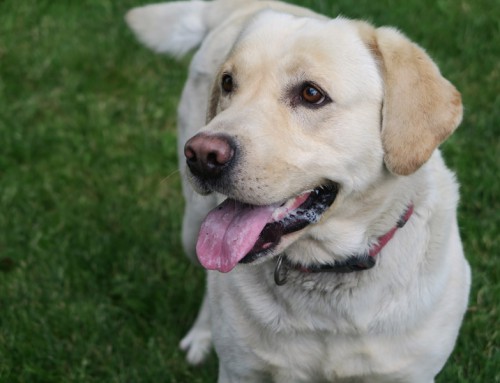They say that in order to truly understand the human mind, you must have a good understanding of human psychology. Well, the same can be said for dogs.
Dog psychology is the attempt to understand dog behaviour from a canine perspective. all too often we tend to humanise our pets and expect them to not only understand our language, but follow it. What we forget is that dogs are animals that have different needs and ways of communication.
It’s no wonder that man’s best friend is looked upon as an extension of our human world. Movies and TV shows like Lassie, Lady and the Tramp, and Milo and Otis have done a wonderful job at shining us in the same light. But the reality is that we are different. A dog’s emotions and intentions can vary greatly from that of a human.
‘Dogs think they are human’ – is this true?
Owners often like to believe that their dogs think of themselves as human, and should therefore be treated like one. This is not true, however. Very rarely does a dog look at itself like a human, and instead, is perfectly happy with being a dog.
Dogs have an ingrained pack mentality, and if you’re not asserting leadership over your dog, they will try to compensate by showing dominant or unstable behaviour. If you’re telling people your dog thinks he is a person, then chances are that you might have a dog that likes to believe he is your leader.
So does that mean that dog ownership is a power struggle?
No, it doesn’t! Through a stroke of evolutionary luck, we are blessed with opposable thumbs through which we have priority access and total control of everything that our dogs want. We also have sophisticated brains that allow us to plan ahead. By maintaining control over everything the dog wants, including food, access, and attention, and not giving these things away for free or on demand, it’s not necessary to get into a power struggle with dogs. We are already ‘dominant’.
What does dog psychology tell us?
Dog psychology tells us that dogs communicate with one another using scent, body language, and energy. They are most likely communicating with you as well, you may just not be aware of it.
Should you choose to embrace it, there’s a smorgasbord of readily observable signs that you can use to better understand what your dog is thinking. Once you get a hang of these, watching your dog is like watching a foreign film without the subtitles and still getting the gist.
Examples of body language signs include:
- The ‘approachable’
Dog’s tail is down and relaxed, his ears are up, head is high, legs are loose, and mouth slightly open. He’s telling you that he’s relaxed, comfortable, and approachable.
- The ‘something’s up’
The dog’s eyes grow wider as he smooths his nose and forehead. Mouth is closed, tail slightly raised, and he has a slight lean forward as he stands on his toes. The dog has detected something of interest, something unknown, and these signals tell you that he’s trying to determine the situation.
- The ‘hair raise’
Seeing hair rise on your dog’s back doesn’t always mean that he’s about to go to town on another poor dog; it can simply mean that he is excited. Even so, hair raising does call for some extra vigilance on your part.
- The ‘come play with me’
The dog lowers his front, exposes his tongue, and his pupils dilate. Ears are up, as is the tail, and he may also be waving it madly. Your dog wants to play, and this is an open invite for you to join him. His excited barks are merely encouragement for you.
- The ‘neck hump’
The neck hump is a basic demonstration of dominance – not aggression. A dog places its neck over another dog and leaves it there, showing the dog that it is in charge. There should be no aggressive response, unless the dominated dog decides that it suddenly wants more power.
- The ‘fearful’
If your dog is tucking his tail under, his hair is raised, ears are back, and he’s holding a forward stance, then he could be frightened. Should his nose wrinkle and lips curl back to reveal teeth, then he may be getting ready to attack a threat.
- The ‘back for more’
When a dog purposely runs into a form of rough play, he’s doing it because he wants to. Many dog owners worry when their dog is continually being bowled over by another, but if your dog is going back in for more then they may be having fun. If they don’t like it, they’ll come running to you, so just leave them to have their play.
Emotion and intention
For a dog, emotion is displayed through body language while intention is displayed through motion. When a dog is in a distressed state, it has three instinctual movements: fight, flight, or avoidance. In fight mode, the dog moves forward, and in flight mode, it runs away. It may not move away in avoidance, but it will do everything else to not face the situation at hand.
The theory of fight, flight, and avoidance can often be misinterpreted. A healthier way to look at it perhaps is like advance, retreat, and ignore. Both an excited and aggressive dog may move forward, but one is playful while the other is threatening. A dog can run away in fear, but also as a form of play. Emotion plays a part, and therefore it’s emotion you should be looking for when trying to read dog psychology. Without reading their emotions as well as their body language, it’s impossible to understand exactly what the dog is saying.
Many Australian pet education programs offer training in canine language, and it can be hugely beneficial to learn your dog’s visual and auditory cues. Talk to your local dog trainer about their knowledge on dog psychology, and deepen the relationship between you and your pet.
How do you know if a dog likes you?“If a dog’s tail is down and relaxed with his head held high and ears up, then it means he’s relaxed, comfortable, and can be approached. If a dog’s tail and ears are up with his tongue exposed, then he may be excited and want to play. Having raised fur or a tail tucked under may mean that your dog is feeling fearful or threatened.” |







Leave A Comment